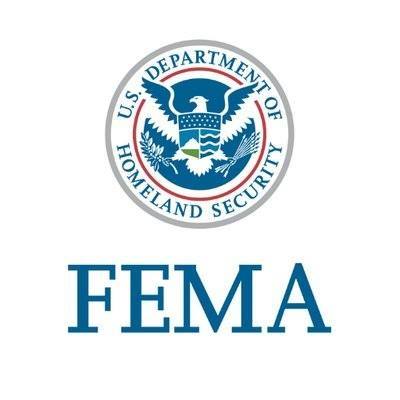
Thanksgiving Holiday Travel was Deadly across Louisiana: State Troopers Delivered Death Notifications to 16 Families
November 29, 2021
Disaster Recovery Centers Open in Cut Off and Montegut
November 30, 2021Hurricane Ida updates were given at last night’s Terrebonne Parish Council Committee meeting. EOC Director Earl Eues and Terrebonne Parish Planning and Zoning Director Chris Pulaski addressed the council.
Eues reported there have been two and a half million cubic feet picked up so far and will continue to pick up. FEMA has given $30 million to Terrebonne residents and the SBA has given around $30 million in SBA loans. The last day to register for assistance was yesterday, however, the agency has announced they will still be in the area until they are no longer needed. As of yesterday, the Houma Civic Center DRC is still seeing an average of 200 people a day.
Eues reported that FEMA has 136 units on people’s property and only 11 are currently occupied. He also announced that FEMA will open a Disaster Recovery Center (DRC) in Montegut starting today, November 30, at the recreation area where the ball fields are located. They are hoping that having a DRC down the bayou will help residents not have to travel so far to get to a center and it will hopefully help alleviate the number of people that are seen daily at the Houma Civic Center DRC location.
Pulaski continued with reporting on the base camps in the area that include Montegut, Chauvin, Dulac, Scott Lane, and Williams Avenue. He reported that the Dulac camp is down to three occupants. Pulaski said he spoke with GOHSEP and said they are working hard to get residents still in camps tracked into better options. He said,” I have a feeling they will be out of there within the next week.” He also said they are receiving reports that people are getting turned away and he believes it’s because the type of facility Scott Lane and Williams Avenue are a unique type of housing being they are modular units and they contain bunk beds. Pulaski noted that the bunk beds make it difficult for elderly and disabled survivors can utilize the units and they are working to get more options.” I think the big message too to put out there,” he said,” these are not permanent solutions. These are not even long-term solutions, they’re just temporary housing solutions. It’s a base camp, it’s temporary shelter.” He said GOHSEP is trying to identify the residents and working the social cases to get them into more sufficient options best suited for the survivors’ particular needs and it’s ongoing.
Pulaski said they are also still getting reports that people are being told they cannot have a mobile home because their properties are in a special flood hazard area. “That is not true,” he said,” that has been a long-standing rule with FEMA in their direct housing program, but last year, they started to adjust that after Laura and they offered that option to us, and we took it.” He said they will allow mobile homes to be placed in special flood hazard areas below base flood elevation for the duration of the program. Once the program is over, if the housing unit is not hauled off, if it’s no longer a need, or if FEMA offers that housing unit to the survivor for purchase before the sale happens, they have to bring it into compliance which means they will have to elevate it. He noted that depending on the height, especially over 52 inches, you get into a situation where you need an engineered foundation so there is a lot more that goes into it. With this said, Pulaski said they had a FEMA representative come into Houma yesterday that will be embedded in the Planning and Zoning office beginning November 30 to be readily available for issues. This then struck a conversation about survivors being told different things, such as they need a temporary pole to be installed, by the people delivering the units.
Pulaski said,” in my opinion, they shouldn’t be telling anything because I think what they must be saying is they’re looking at that person’s meter that’s been totally destroyed, damaged, or not even there, and they’re saying oh, you’ll need a temp pole.” He noted that the survivor is hinging on every word that the delivery person is telling them, and since they are wanting it to happen as fast as they can, they are hearing that they require the pole instead of, “you need a temp pole that will be provided by the program.” This is leading to people taking it upon themselves to get the poles installed which costs the occupants at least $1,200. He said, “For everybody watching or listening, to spread the word out, if you are being told that you have to go out and pay an electrician to install a meter pan or a temp pole…do not do that without first checking with the parish permit office or your APTIM or FEMA representative.”
Jessica Domangue, Councilwoman District 5, said she’s more concerned with the long-term solutions. “What is the long-term solution?… What’s the plan for us moving forward for our section 8 housing? Where are these people going to go? Or are we just going to house them until they’ve had enough and they decide to leave Terrebonne Parish?… have you been in any conversation as to what is the plan for those low-income housing units?” she asked. Pulaski said that Kelli Cunningham and Terrebonne Parish President Gordon Dove have been in discussion with the what the long-term solutions will be and he has been brought in on some of the conversations when it comes to sites that they have in the planning and zoning department. “That’s what I was alluding to when I’m talking about options,” he said,” all of these programs, the base camps, the state trailers, the FEMA trailers, those are all temporary.” He said on contrary, the FEMA mobile home units could become a long-term solution depending on the person’s situation, but not if they’re a renter because they are going to a group site. This led him to ask, “so what happens to all of them when the program ends?” He reiterated that Kelli Cunningham and her group have been working hard on the solutions.
Pulaski then reported on the state housing program with GOHSEP and APTIM. They have 623 trailers deployed on sites and 369 of those are currently occupied. They are still working on a group site located at Rebecca Plantation which is currently under construction and will have 244 units upon completion. Later this week, they are anticipating receiving rocks to be laid and for the pads to begin to be constructed. They are anticipating for the first group to be ready by December 16. The contractors and Entergy are in discussion to decide how the meters are going to be set up.
Pulaski also noted that if you pass by the Houma Civic Center, you will notice that there are very few trailers in the parking lot, and by today they will probably have none parked. This is because the three trailer sites that FEMA has had in place are consolidating to one site in Prairieville where they will be deployed from. He noted that not all of the trailers reflect what is allocated specifically for Terrebonne Parish, these are trailers that are for all areas, they are just staging areas.
Pulaski said that an APTIM representative will be at Wednesday’s Parish Council meeting. He is currently trying to get an answer from a FEMA direct housing representative to get a confirmation about their presence at Wednesday’s meeting, and he is also still waiting on an answer from Entergy whether or not they will have a representative at the meeting as well. Wednesday’s meeting will take place at 6 P.M. at the Terrebonne Parish School Board Office located at 201 Stadium Drive.







